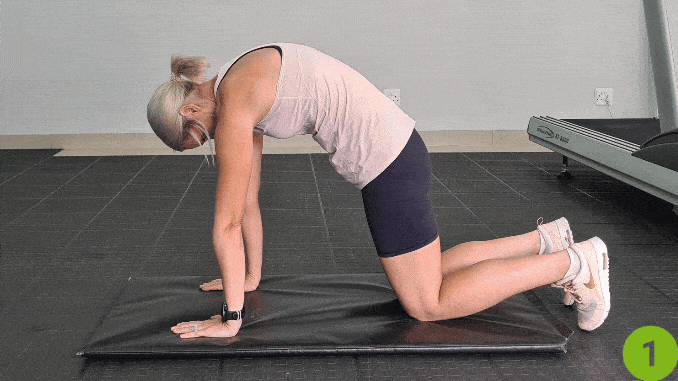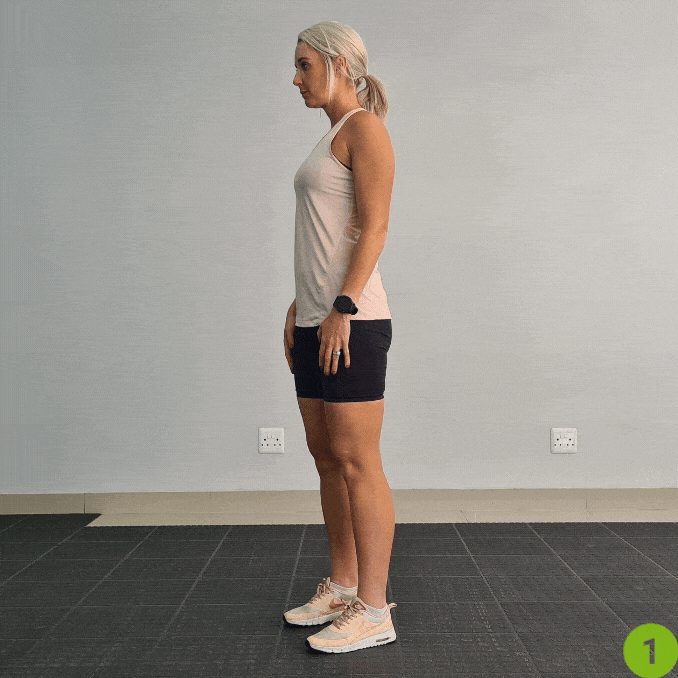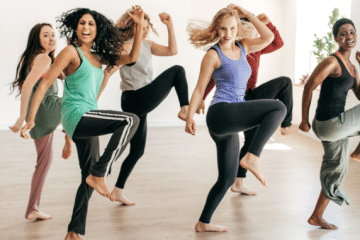Somatic exercises combine movement, breathwork, and mindfulness to improve physical and mental health. They help relieve pain, reduce stress, and unlock natural healing. Research shows that our body's natural reactions [1] to exercise can affect our desire to be active. Addressing negative reactions is key to overcoming barriers to a healthier lifestyle, paving the way for turning exercise reluctance into enthusiasm.
What is Somatic?
“Somatic,” from the Greek word “sōmatikos,” means “of the body.” It relates to exercises that focus on internal body sensations and movements. This approach emphasizes the mind and body's connection to improve both mental and physical health.
Somatic practices like movement and therapy use mindful techniques to increase body awareness and reduce tension. These exercises help people connect with their inner feelings, addressing muscle tension linked to emotional stress or issues like chronic pain or PTSD.
Moreover, somatic therapy uses body-focused movements to build emotional awareness and relieve stress. It helps treat mental health issues by releasing physical tension and improving well-being. Practicing these techniques can also ease chronic pain and trauma, supporting a comprehensive approach to health.
How Do Somatic Practices Affect the Mind?

Somatic practices deeply connect the body and mind, enhancing mindfulness and reducing stress. These exercises help individuals tune into their bodies, releasing tensions and emotional blockages. This leads to clearer thinking, emotional release, and a calm mind.
Moreover, as people become more aware of their body's signals, they improve their ability to manage stress and emotions. The relaxation from somatic exercises also boosts focus and decision-making. Overall, these practices provide a holistic approach to mental health by integrating physical and mental well-being.
Exploring the Mind-Body Connection
Somatic exercises connect the mind and body, using movement and therapy to promote healing. These methods are great for treating physical symptoms of mental stress, like chronic pain from emotional trauma. By focusing on body awareness, people learn to notice and relieve muscle tension that's linked to psychological stress.
Regular somatic movement can significantly reduce stress and increase emotional awareness, giving people tools to aid their own healing. These practices not only manage but can transform chronic pain and stress, improving overall well-being.
Benefits of Somatic Exercises
1. Pain Relief
Somatic exercises help reduce chronic pain by focusing on its causes, such as muscle tension. These exercises loosen tight muscles, improve blood flow, and help muscles work better, easing pain and making your body feel more comfortable.
2. Stress Reduction

These exercises help reduce stress by promoting mindfulness and focus, which calm the nervous system and reduce anxiety. Gentle movements and controlled breathing help relax the body, bringing peace and well-being.
3. Improved Posture
Somatic exercises help fix posture problems by balancing muscles and reducing tension from sitting too much or repeating the same actions, improving how you look and move.
4. Enhanced Body Awareness
Engaging in somatic practices boosts body awareness, making you more in tune with your body's needs and signals. This heightened awareness influences your daily life choices, enhancing your health and wellness.
5. Mental Health Support
Regularly practicing somatic movements can help mental health, especially for those with conditions like PTSD. These exercises also improve the connection between mind and body, increasing emotional awareness and helping manage mental health issues.
6. Emotional Release
Somatic exercises provide a pathway for releasing stored emotions in the body, particularly beneficial for those experiencing emotional stress or past trauma. By using somatic experiences and other therapeutic movements, individuals can release physical tension associated with emotional baggage, contributing to emotional healing and resilience.
Somatic Exercises for Improved Posture
Poor posture can lead to back and neck pain, muscle issues, and decreased mobility. Somatic exercises ease tension and boost movement awareness. Exercise also helps improve mood and can lessen depression. [2]
Try incorporating these somatic exercises into your routine for improved posture:
1. Cat-Cow Stretch

- Begin in a 4-point position with your hands beneath your shoulders and your knees under your hips.
- Inhale and contract your abdominal area.
- Exhale and then slowly round out your mid-back as you drop your head downward.
- Then alternate by inhaling as you slowly lift your head and arch your mid-back.
- Repeat the movement, alternating directions.
2. Pelvic Tilts

- Firstly, lie on your back on the floor with your knees bent and feet flat on the floor.
- Secondly, slowly roll your pelvis backward as if you were flattening out your spine.
- Lastly, hold this position for several deep belly breaths, in through your nose and then out through your mouth.
- Slowly return to the starting position.
3. Shoulder Rolls

- Begin in an upright standing position with your feet shoulder-width apart, while maintaining good alignment with your head, shoulders, hips, and legs.
- Rest your arms at your sides and then engage your core.
- Shift your shoulders forward, then roll them up and back until you feel resistance in your shoulder blades.
- Relax and then repeat the movement.
- Complete 10 repetitions.
Somatic Exercises for Pain Relief
Chronic pain can really affect your life, so it's important to find good ways to manage it. Somatic exercises are a gentle way to help relieve pain by focusing on the root causes, not just the symptoms.
Some somatic exercises that can help relieve pain include:
1. Pandiculation

Pandiculation involves the intentional contraction and subsequent release of muscles to release tension and increase body awareness. By consciously contracting and releasing specific muscle groups, we can reset the muscle length and also reduce chronic tension.
2. Slow, Controlled Movements
Doing slow, controlled movements can help you move better, boost blood flow, and lessen pain. These exercises focus on releasing tension and promoting relaxation in tight or restricted areas of the body.
3. Breathwork
Deep diaphragmatic breathing can also activate the body's relaxation response, reducing stress and alleviating pain. By consciously breathing into areas of discomfort, we can promote relaxation and release tension.
Somatic Exercises for Stress Reduction
Stress is a common and often unavoidable part of life. However, chronic stress can have detrimental effects on our physical and mental well-being. Somatic exercises offer a powerful tool for managing stress and promoting relaxation.
Here are some somatic exercises that can help reduce stress:
1. Body Scanning

Body scanning is a mindfulness exercise where you pay attention to each part of your body, notice any tight spots or discomfort, and try to relax those areas. This exercise also helps promote relaxation and body awareness.
2. Progressive Muscle Relaxation
Progressive muscle relaxation is a technique where you tighten and then relax various muscle groups one by one to help your whole body relax. By alternating between tension and relaxation, we can release chronic muscular tension and also reduce stress.
3. Mindful Movement
Engaging in slow, mindful movements can also help shift our focus away from stressful thoughts and bring us into the present moment. By combining movement with breath awareness, we can calm the nervous system and reduce stress.
Conclusion
This introduces you to exercises that unite your mind and body, promoting overall wellness through movement and breathing. Regular practice can improve posture, reduce stress, and relieve pain, helping you feel stronger and more balanced. Perfect for enhancing physical and emotional health, these exercises energize and renew. Start your journey to a happier, healthier you with somatic exercises.
Don't wait until it is too late! Take control of your brain health now with the 14-Day Brain Health Quick Start Program! Check out now!





